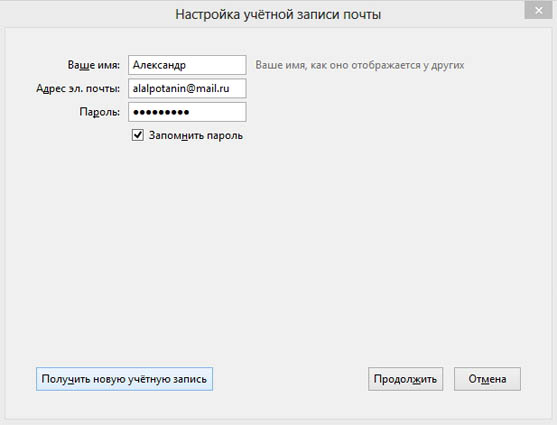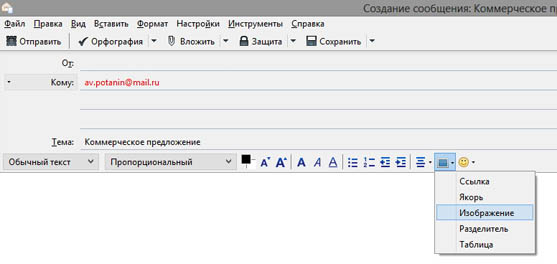At one time, I sent commercial proposals quite often and was convinced that I was doing everything right. Time has passed, and now it has become easier for me to judge my own and other people’s shortcomings, to analyze why letters receive few responses.
8 secrets of successful business proposals
1. Make emails personal
Before sending messages, try to find out the name, phone number and email of the person making a decision on your proposal - this way your letters will immediately fall into the “right hands”. If the client receives it by email, it attracts even more attention than the topic itself. adds the name to the “To” field automatically, if, of course, it is specified in the contact’s profile.
2. Be consistent
Follow the sequence of presentation: who do you represent, what is the purpose of the letter, describe the benefits of cooperation with you. The sender's email should be easily recognizable and display the sender's name and your company name. The client must understand that the letter did not reach him by chance.
For example, From: “Alina Svetlova, Papillon LLC”
To: "Egor Petrov"
3. Keep your word
When agreeing to send a commercial proposal, send the letter within the pre-agreed time frame. It would be good to mention in the text that the offer was sent after a preliminary call. If a manager was looking for clients, it is better to conduct correspondence on his behalf. If different managers handled the calls, make several mailings with different senders and signatures. At the end of the message, be sure to include the manager’s contact information so that the client knows who to contact. As a bonus, you can compare the data collection efficiency of your peers.
4. Get creative with your email subject line
Do not write in the “Commercial offer”. This phrase is a safe word and has become so boring that it scares off customers even on a subconscious level. Just imagine how difficult it is to highlight your letter if a person receives dozens of similar mailings a day. Better come up with a title that will help solve specific client needs.
5. Use links instead of attachments
Large emails may not be allowed through mail servers. Even if the letter reaches the recipient, he may decide that the attached files contain viruses, or simply not want to download. Send “light” letters using links in the text. The client himself will decide what he needs to download, and you can track this by clicking on the links. In addition, you can place a link to your website, just think about the navigation on the site in such a way as to guide the client to your goal as quickly as possible.
6. Stick to corporate style
Develop a unified manner. The commercial proposal should briefly describe the essence of your proposal and the benefits for the client from working with you. Write no more than one page, but not too formally. Use subheadings, lists, short paragraphs. The first sentence of a paragraph should reveal the main idea. The text should not contain ambiguity or complex sentences.
7. Include in your letter only what was discussed, without unnecessary words.
So that the client can easily find what interests him. The reader should have all of his questions answered before he has time to ask them or read the entire letter carefully. The text of the letters should be clear for regular customers and those who are learning about you for the first time. The letter should: call you, write or find out more on the website.
8. Spend time checking grammar, pictures, links, etc.
Remember that you can only make a first impression once, there will be no second chance. Letters should not contain little things that could spoil the overall image of you. Don’t skimp on spending time/money on a message, the success of which will determine contracts and your future business. Be sure to send the letter to yourself first and see how it looks.
We continue the conversation about the intricacies of working with a commercial proposal. As promised, in several posts I will talk about the most effective options for sending commercial proposals and give appropriate recommendations. Today we are talking about a classic - sending a CP by a sales manager after a call to a client. Go!
This scheme for working with a commercial proposal consists of the following stages:
- Stage No. 1 - Call a potential client
The goal of this stage is to come into contact with the client, contact the decision maker (DM), take his email address, where we will send the CP.
- Stage No. 2 - Sending a commercial proposal
We met the client, we know the decision maker, as well as his address. All that remains is to send this person our commercial offer. That's what we do at this stage. We send a colorful selling commercial offer as an attachment to the letter, or upload it to the cloud and provide a link to it, and put a small accompanying text in the letter itself.
In this scheme, there is no need to be particularly clever with the text. You can limit yourself to greeting the recipient, reminding him of the call and the agreements reached, as well as indicating that the offer that the client requested is included in the attachment to this letter.
At the same time, first check if your commercial proposal contains this non-obvious error that ruins the whole thing.
By the way, how do you like a commercial offer with a conversion of 50%?
- Stage No. 3 - Find out whether the commercial offer has been received
The task of this stage is extremely simple. The next day after sending, the manager should call the client and find out whether the letter with a commercial offer (or with a presentation, marketing kit) was received. That's it, you don't need to know anything else. If the client received the CP, then you should politely say goodbye, if not, send it again and then repeat this step.
- Stage No. 4 - Find out the result
A fundamentally important stage of work! After another day or two, you need to call the client again and clarify the result of considering the commercial proposal. Here the manager must find out, in particular, whether the CP has been read and how interesting it is. Now attention! If the client is not interested in commercial, then it is imperative to ask - WHY?
Feel free to ask this question. As a rule, it doesn’t bother clients and they honestly say what was wrong. And, for example, we are based on this feedback We make all necessary adjustments to the commercial offer free of charge.
Why is this moment so important? Yes, because if you don’t have feedback from customers, then how can you find out what’s wrong with your commercial offer? Any adjustments without feedback and statistics turn into guesswork. And it’s not a fact that they will lead to the desired result.
Therefore, be sure to ask clients what is wrong with the CP. Why they were not interested in it, what turned out to be incomprehensible, and what was missing in the text. In this way, you can significantly improve both the commercial offer itself and refine your offer, setting you apart from your competitors.
And don’t forget, after sending the proposal, to turn on the system for automatically pressing applications, which I also talk about.
That's all for today. Next time I will talk about how to send a commercial proposal on the database email addresses no calls to clients. A little later we will talk about how to properly work with a commercial offer offline.
In this article, we will look step by step at how to send images in the body of an email, rather than as an attached file, to achieve the maximum effect from the mailing.
We all use email and have probably received beautiful emails more than once that contain not only text, but also the actual design. There are two ways to create such letters:
By creating an html version of the letter;
By sending our offer with a picture in the body of the letter.
We will not consider now html version email, since it cannot be sent via regular email, special email newsletter services are often used to send html emails.
On this moment we will focus on a regular picture, which we will send in the body of the letter. Inexperienced users often look for the opportunity to insert a picture in the body of an email through a regular interface. Email. However, send the picture in body via online email mail mail or Yandex is not possible, for this you will need to install an email client.
After reviewing several email clients, we settled on the free one. Mozilla Thunderbird. Although you can use another email client with similar functionality.
Setting up Mozilla Thunderbird
The first step is to set up the Mozilla Thunderbird email client, which is very easy to do in a few minutes. Enough enter your username and password from an existing email in the program and this is where the setup ends.
Now you can view and send emails not only through the online interface, but also through the program. In use mail client has its advantages, among which is the ability to view letters even without the Internet, which the program downloads to your computer every time, it is also convenient to switch between several mailboxes without constantly entering your login and password.
1. Click File >> New >> Set up my account Email
2. Enter your email details

This completes the setup; all we have to do is press the next button several times.
Inserting an image into the body of an email in Mozilla Thunderbird
Now all that remains for us is to create a new letter and insert an image into the body of our letter, for this:
1. Click Message >> Create;
2. We write the address of the recipient of the letter and the subject of the letter;
3. Click on the “image” menu icon and select

4. In the window that opens, click on the button " Select a file" and select the file on your computer that we want to send. I also recommend going to the " tab Link" and indicate a link to your website, so that after viewing the commercial offer, your potential client can go to your website with one click.
That's all, click on the send button, email with the image in the body will be delivered to the addressee.
We have considered the simplest option of sending an image in the body of the letter, but in certain cases, for example, when sending a commercial offer to a large customer base, it is more convenient to use services.
